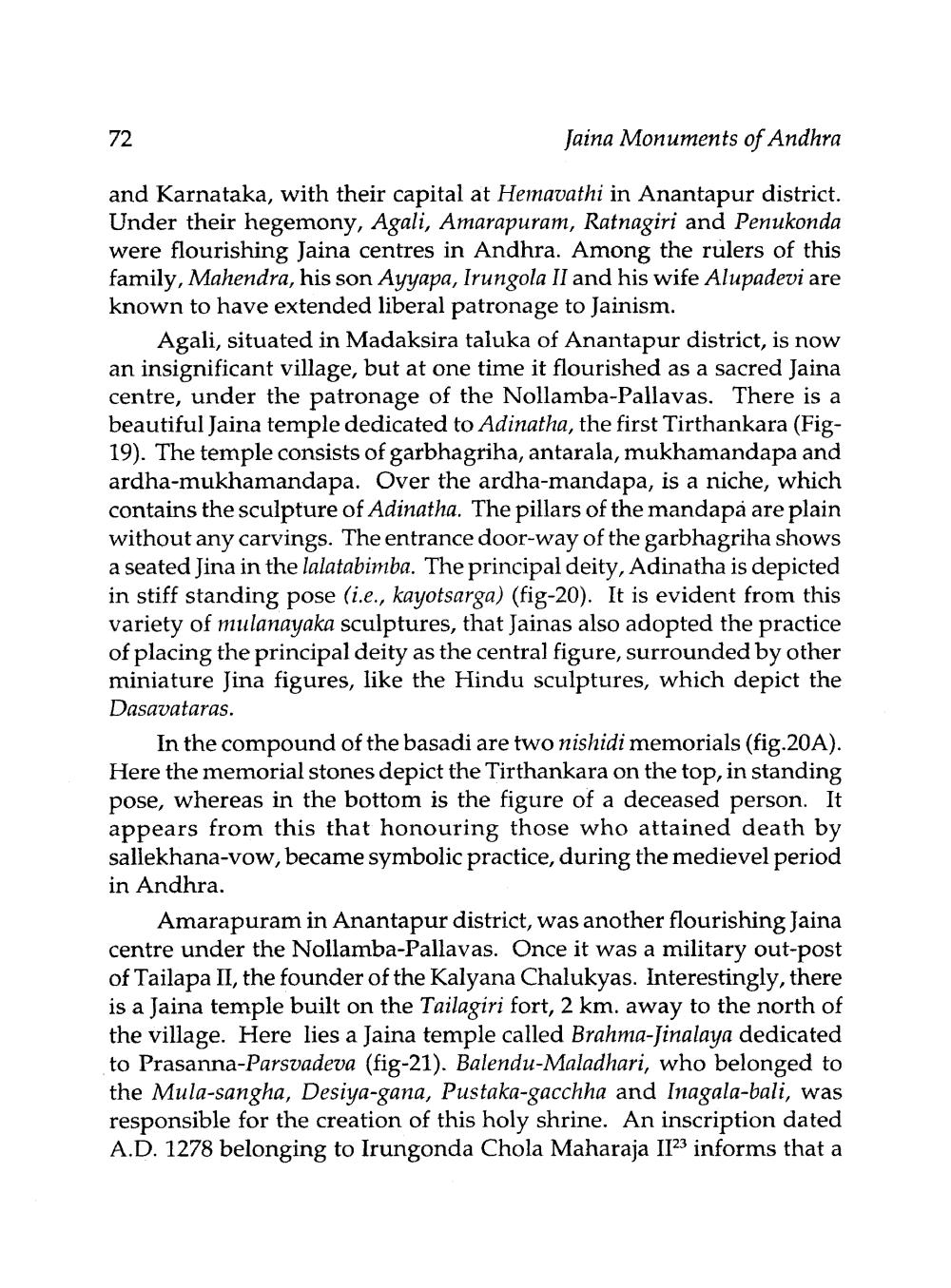________________
72
Jaina Monuments of Andhra
and Karnataka, with their capital at Hemavathi in Anantapur district. Under their hegemony, Agali, Amarapuram, Ratnagiri and Penukonda were flourishing Jaina centres in Andhra. Among the rulers of this family, Mahendra, his son Ayyapa, Irungola II and his wife Alupadevi are known to have extended liberal patronage to Jainism.
Agali, situated in Madaksira taluka of Anantapur district, is now an insignificant village, but at one time it flourished as a sacred Jaina centre, under the patronage of the Nollamba-Pallavas. There is a beautiful Jaina temple dedicated to Adinatha, the first Tirthankara (Fig19). The temple consists of garbhagriha, antarala, mukhamandapa and ardha-mukhamandapa. Over the ardha-mandapa, is a niche, which contains the sculpture of Adinatha. The pillars of the mandapa are plain without any carvings. The entrance door-way of the garbhagriha shows a seated Jina in the lalatabimba. The principal deity, Adinatha is depicted in stiff standing pose (i.e., kayotsarga) (fig-20). It is evident from this variety of mulanayaka sculptures, that Jainas also adopted the practice of placing the principal deity as the central figure, surrounded by other miniature Jina figures, like the Hindu sculptures, which depict the Dasavataras.
In the compound of the basadi are two nishidi memorials (fig. 20A). Here the memorial stones depict the Tirthankara on the top, in standing pose, whereas in the bottom is the figure of a deceased person. It appears from this that honouring those who attained death by sallekhana-vow, became symbolic practice, during the medievel period in Andhra.
Amarapuram in Anantapur district, was another flourishing Jaina centre under the Nollamba-Pallavas. Once it was a military out-post of Tailapa II, the founder of the Kalyana Chalukyas. Interestingly, there is a Jaina temple built on the Tailagiri fort, 2 km. away to the north of the village. Here lies a Jaina temple called Brahma-Jinalaya dedicated to Prasanna-Parsvadeva (fig-21). Balendu-Maladhari, who belonged to the Mula-sangha, Desiya-gana, Pustaka-gacchha and Inagala-bali, was responsible for the creation of this holy shrine. An inscription dated A.D. 1278 belonging to Irungonda Chola Maharaja 1123 informs that a




